Helmet Of Meskalamdug – Sumerian King Of The First Dynasty Of Ur
A. Sutherland - AncientPages.com - Sir Leonard Woolley found the gold helmet of King Meskalamdug (Mes-Kalam-Dug ) (1880 – 1960), a British archaeologist best known for excavating Ur in Mesopotamia.
 Electrotype copy of the Gold Helmet of Meskalamdug from Ur (Original, dated to 2600 BC and discovered in the Royal Cemetery of Ur, is now in the Iraq Museum.
Electrotype copy of the Gold Helmet of Meskalamdug from Ur (Original, dated to 2600 BC and discovered in the Royal Cemetery of Ur, is now in the Iraq Museum.
Meskalamdug (Mes-Kalam-Dug ) - ("hero of the good land") was an early Sumerian king of the First Dynasty of Ur in the 26th century BC.
He does not appear in the Sumerian King List. Still, He is known from a royal cylinder seal found in the Royal Cemetery at Ur, a royal bead inscription found in Mari, both mentioning him as King, and possibly his tomb, grave PG 755 at the Royal Cemetery at Ur.
From an inscription on a lapis lazuli bead found at Mari, we know that the royal Meskalamdug took the title King of Kish and was the father of Mesannepada. However, one vessel in the young man's grave had an inscription named "Ninbanda." She was called "queen," but it is still problematic to determine women's identity.
Was she the wife of Meskalamdug, the King? Or perhaps she was the wife of Mesannepada?
An inscription from the city of Mari informs that Meskalamdug is the father of Mesanepada ("Youngling chosen by An"), the ruler listed for the First Dynasty of Ur (ca. the 26th century BC).
The name 'Meskalamdug' appears on inscriptions found in two graves from the royal cemetery of Ur, unearthed in 1924 by Sir Woolley. In one grave with the remains of a woman, archaeologists also found a cylindrical seal with the inscription "Meskalamdug, King." It could indicate a sacrifice made in his name during the funeral. Made of shell, with a core in lapis-lazuli, the seal depicts two crossed lions attacking bulls, with Enkidu and a naked man in profile participating in the fight.
The second grave includes two golden bowls and a golden shell-shaped lamp, on which the name "Meskalamdug" was engraved. The excavation of this grave revealed the famous helmet of Meskalamdug, a golden artifact in the form of a wig with finely sculpted hair. Another artifact from the city of Mari was a bead from lapis-lazuli bearing the inscription of Mesanepada.
This inscription mentions Meskalamduga as the father of Mesanepada.
The helmet, 22.7cm high, 27 cm long, and 21 cm wide, was meticulously made from a single sheet of gold. It is shaped like a wig with carved curls, and the bun at the back was created for the King's hair. The wig-like pattern was hammered from the inside of the helmet. The holes around the edge were placed so a cloth lining could be sewn in to make it more comfortable.
This kind of helmet (instead of parade armor, not used in battle) was believed to be worn only by kings and high-ranking dignitaries.
Meskalamdug's tomb represents one of the Royal Tombs of Ur of the Chaldees, a city mentioned in the Hebrew Bible as the birthplace of the Jewish patriarch Abraham; however, the city's location has been debated. One of the graves investigated by Sir Woolley mainly contained valuable and fascinating objects. A man's body was discovered in a wooden coffin at the shaft's bottom.
Findings around the coffin include many remarkable artifacts such as spears and vases of alabaster and clay, gold-mounted daggers, copper daggers and tools, fifty copper bowls, silver bowls, and plates.
Inside the coffin, the found remains included the body, a gold dagger, lapis lazuli, gold beads, two gold bowls, and a gold lamp. Beside the decayed skull was a helmet of beaten gold. A cuneiform inscription on two bowls and the lamp read 'Meskalamdug.' The same name (and the word 'lugal') was also carved on a cylinder seal found in another tomb, and 'lugal' - King.
"One particularly rich tomb that Woolley did not include among the royal tombs, in large part because it did not have a tomb chamber or retainers, nevertheless stands out. PG 755 consisted of a rectangular pit measuring 2.50 by 1.50 meters with artifacts the likes of which Woolley had found only in royal tombs.
In the coffin, for example, were gold and silver lamps and a second gold bowl inscribed with the name Meskalamdug. Not far from the body, a larger collection of jewelry was found, including a copper pin usually worn by women in the royal tombs, with ahead in the form of a squatting monkey. It is believed that the jewelry was a gift to be presented to underworld deities. Outside the coffin was, as Sir Woolley noted, a "bewildering" number of artifacts, including metal vessels inscribed with the names "Meskalamdug" and Ninbanda, the queen.." 1
The honorable and traditional title of the King of Kish was reserved for those who ruled over the regions of Sumer and Akkad.
Some of the Kish rulers' names refer to Akkad, which suggests the early consolidation of Semitic power located in the northern part of Lower Mesopotamia. The King of Kish was often an Akkadian ruler who dominated Sumer.
Written by – A. Sutherland AncientPages.com Staff Writer
Updated on January 5, 2024
Copyright © AncientPages.com All rights reserved. This material may not be published, broadcast, rewritten or redistributed in whole or part without the express written permission of AncientPages.com
Expand for referencesReferences:
- Donald P. Hansen, Holly Pittman, "Treasures from the Royal Tombs of Ur"
(Univ. Of Pennsylvania Pr, Univ. of Pennsylvania. Museum of Archaeology and Anthropology)
R. L. Zettler, L. Horne, Treasures from the Royal Tombs of Ur
M. Baizerman, Dawn and Sunset: A Tale of the Oldest Cities in the Near East
More From Ancient Pages
-
 Interesting Relief Sculpture Of Pharaoh Hatshepsut Found At Swansea University
Archaeology | Mar 27, 2018
Interesting Relief Sculpture Of Pharaoh Hatshepsut Found At Swansea University
Archaeology | Mar 27, 2018 -
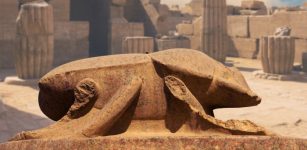 Secrets Of The Scarab – Ancient Sacred Symbol In Human History
Ancient Symbols | Jun 14, 2015
Secrets Of The Scarab – Ancient Sacred Symbol In Human History
Ancient Symbols | Jun 14, 2015 -
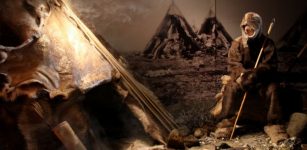 12,000-Year-Old Ice Age Stone Tools Found – Earliest Dated Evidence For Human Activity in Scotland
Archaeology | Oct 10, 2015
12,000-Year-Old Ice Age Stone Tools Found – Earliest Dated Evidence For Human Activity in Scotland
Archaeology | Oct 10, 2015 -
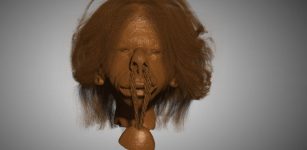 Researchers Confirm Museum Shrunken Head As Human Remains
Archaeology | Aug 4, 2022
Researchers Confirm Museum Shrunken Head As Human Remains
Archaeology | Aug 4, 2022 -
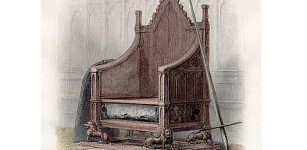 On This Day In History: Stone Of Destiny Stolen From Westminster Abbey In London – On Dec 25, 1950
News | Dec 25, 2016
On This Day In History: Stone Of Destiny Stolen From Westminster Abbey In London – On Dec 25, 1950
News | Dec 25, 2016 -
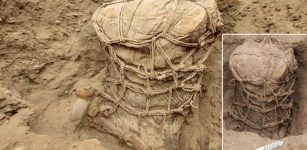 A 500-Year-Old Funerary Bundle And Pottery Probably Belonging To Ychsma Culture – Unearthed Near Lima, Peru
Archaeology | May 22, 2023
A 500-Year-Old Funerary Bundle And Pottery Probably Belonging To Ychsma Culture – Unearthed Near Lima, Peru
Archaeology | May 22, 2023 -
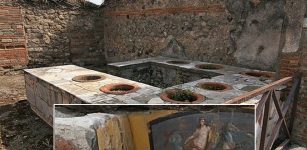 Another 2,000-Year-Old ‘Snack Bar’ Discovered In Pompeii
Archaeology | Apr 10, 2019
Another 2,000-Year-Old ‘Snack Bar’ Discovered In Pompeii
Archaeology | Apr 10, 2019 -
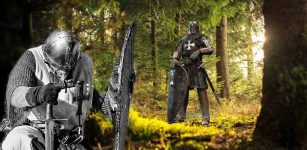 Fascinating Medieval Knight Armor History
Featured Stories | Oct 23, 2018
Fascinating Medieval Knight Armor History
Featured Stories | Oct 23, 2018 -
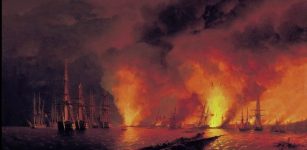 On This Day In History: Battle Of Sinop Took Place – On Nov 30, 1853
News | Nov 29, 2016
On This Day In History: Battle Of Sinop Took Place – On Nov 30, 1853
News | Nov 29, 2016 -
 Ancient Bayanihan Tradition Of The Filipino People: Villagers Move Your Entire House Including Walls And Roof
Ancient Traditions And Customs | Sep 6, 2018
Ancient Bayanihan Tradition Of The Filipino People: Villagers Move Your Entire House Including Walls And Roof
Ancient Traditions And Customs | Sep 6, 2018 -
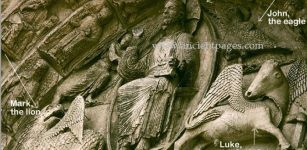 Chartres – Symbol Of Power And Secret Ancient Knowledge
Ancient Symbols | Nov 28, 2018
Chartres – Symbol Of Power And Secret Ancient Knowledge
Ancient Symbols | Nov 28, 2018 -
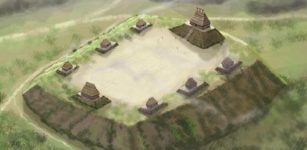 Emerald Mound In The Ancient City Of Natchez: Second Largest Temple Mound In North America
Featured Stories | Feb 22, 2018
Emerald Mound In The Ancient City Of Natchez: Second Largest Temple Mound In North America
Featured Stories | Feb 22, 2018 -
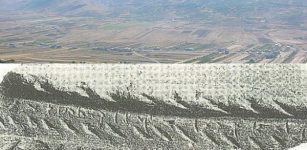 Puzzling McClelland Sherd – Undeciphered Inscription Could Be Early Bronze Age Writing
Artifacts | Mar 27, 2018
Puzzling McClelland Sherd – Undeciphered Inscription Could Be Early Bronze Age Writing
Artifacts | Mar 27, 2018 -
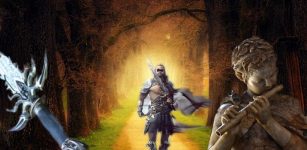 Different Story Of Odin’s Sons Balder And Hoder In Norse Mythology
Featured Stories | Nov 26, 2020
Different Story Of Odin’s Sons Balder And Hoder In Norse Mythology
Featured Stories | Nov 26, 2020 -
 Unexplained Historical Mass Disappearances – Lost Without Trace – Part 1
Featured Stories | May 31, 2019
Unexplained Historical Mass Disappearances – Lost Without Trace – Part 1
Featured Stories | May 31, 2019 -
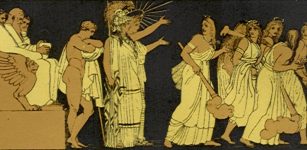 Legendary Furies – Angry And Monstrous Women Of The Underworld
Featured Stories | Dec 23, 2014
Legendary Furies – Angry And Monstrous Women Of The Underworld
Featured Stories | Dec 23, 2014 -
 Mystery Of The Hidden Wooden Hieroglyphic Tablets And The Unknown White Bearded Men – The Civilization That Died Twice – Part 2
Civilizations | Mar 6, 2021
Mystery Of The Hidden Wooden Hieroglyphic Tablets And The Unknown White Bearded Men – The Civilization That Died Twice – Part 2
Civilizations | Mar 6, 2021 -
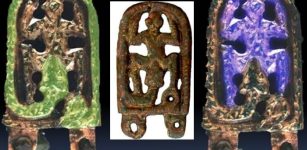 Unique Medieval Bronze Buckle Of A Snake Devouring A Frog-Like Creature Found In Brno, Czech Republic
Archaeology | Dec 13, 2023
Unique Medieval Bronze Buckle Of A Snake Devouring A Frog-Like Creature Found In Brno, Czech Republic
Archaeology | Dec 13, 2023 -
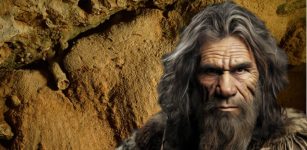 Amazing Time Capsule – La Roche-Cotard Cave Sealed For 50,000-Years Offers Evidence Neanderthals Were The World’s First Artists
Archaeology | Nov 22, 2023
Amazing Time Capsule – La Roche-Cotard Cave Sealed For 50,000-Years Offers Evidence Neanderthals Were The World’s First Artists
Archaeology | Nov 22, 2023 -
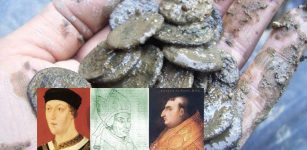 15th Century Cooking Pot With 500 Silver And Gold Coins Unearthed In Vianen, Netherlands
Archaeology | Mar 6, 2018
15th Century Cooking Pot With 500 Silver And Gold Coins Unearthed In Vianen, Netherlands
Archaeology | Mar 6, 2018

